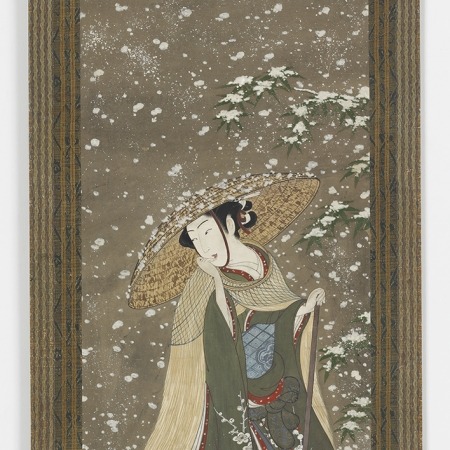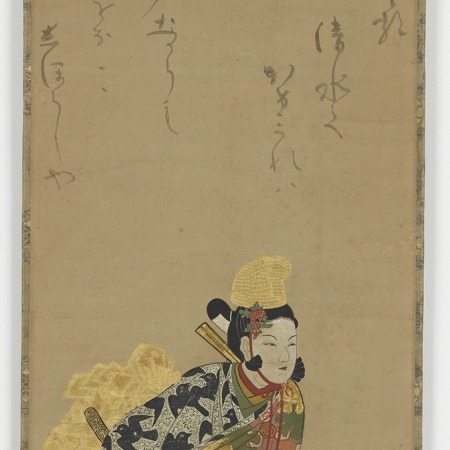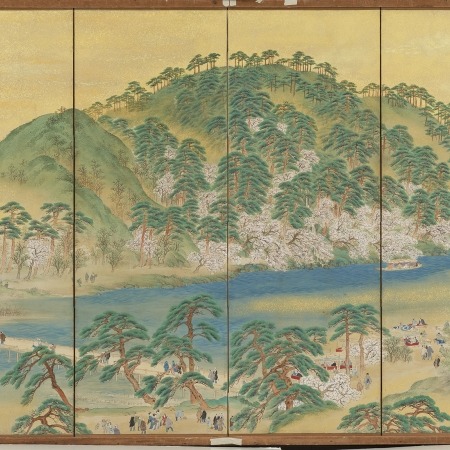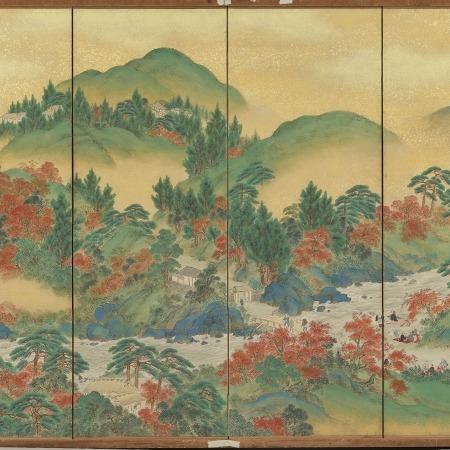GALLERY 2600 | EAST ASIAN ART
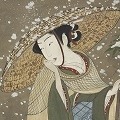 By 1750, the city of Edo, known today as Tokyo, was one of the largest cities in the world, with a population of more than a million. Its inhabitants lived within a tightly regulated class system that favored the ruling warrior class and relegated merchants to a position just above outcast. Almost every aspect of daily life, from occupation and residence to the items of clothing a person could wear, was dictated by these class divisions. Nevertheless, radical imbalances developed as merchants accrued financial wealth inaccessible to the ruling class. In response, vibrant theater and red-light districts emerged, providing outlets from the regulated austerity of everyday life in the capital.
By 1750, the city of Edo, known today as Tokyo, was one of the largest cities in the world, with a population of more than a million. Its inhabitants lived within a tightly regulated class system that favored the ruling warrior class and relegated merchants to a position just above outcast. Almost every aspect of daily life, from occupation and residence to the items of clothing a person could wear, was dictated by these class divisions. Nevertheless, radical imbalances developed as merchants accrued financial wealth inaccessible to the ruling class. In response, vibrant theater and red-light districts emerged, providing outlets from the regulated austerity of everyday life in the capital.
These pleasure quarters were referred to as the “floating world” or ukiyo. In Edo, the licensed brothel district was known as the Yoshiwara, where approximately three thousand courtesans were employed. Though the world of the Edo courtesan was glossed with a glamorous finish, the majority of these women were in fact indentured for 10-year terms to their “houses,” and were ranked according to a complex system. Those who attained the highest ranks were highly accomplished celebrities and commanded correspondingly ruinous fees.
This economy of desire was directly responsible for the development of ukiyo-e, images depicting the voguish men and women of the demi-monde. The term is most often associated with Japanese prints, which circulated in large numbers at relatively low prices. But ukiyo-e also refers to unique paintings of figures from the floating world. Far more expensive than prints, these paintings usually portrayed idealized images of various “types,” rather than specific people. Attention was focused less on the beauty of the individual body than on external markers of sophistication, such as clothing, makeup, and accoutrements. The best of these works capture the distinctive flair and vivacity of the floating world, born of the developing cultural ethos of the young city and fueled by the energy of the sustained collision of high and low culture within it.
The paintings in this gallery come from the extraordinary collection of Robert S. and Betsy G. Feinberg. Remarkable for the quality and range of its Edo period (1615–1868) paintings in particular, the Feinberg Collection has generously been promised to the Harvard Art Museums.
June 2016 – Dec 2016

